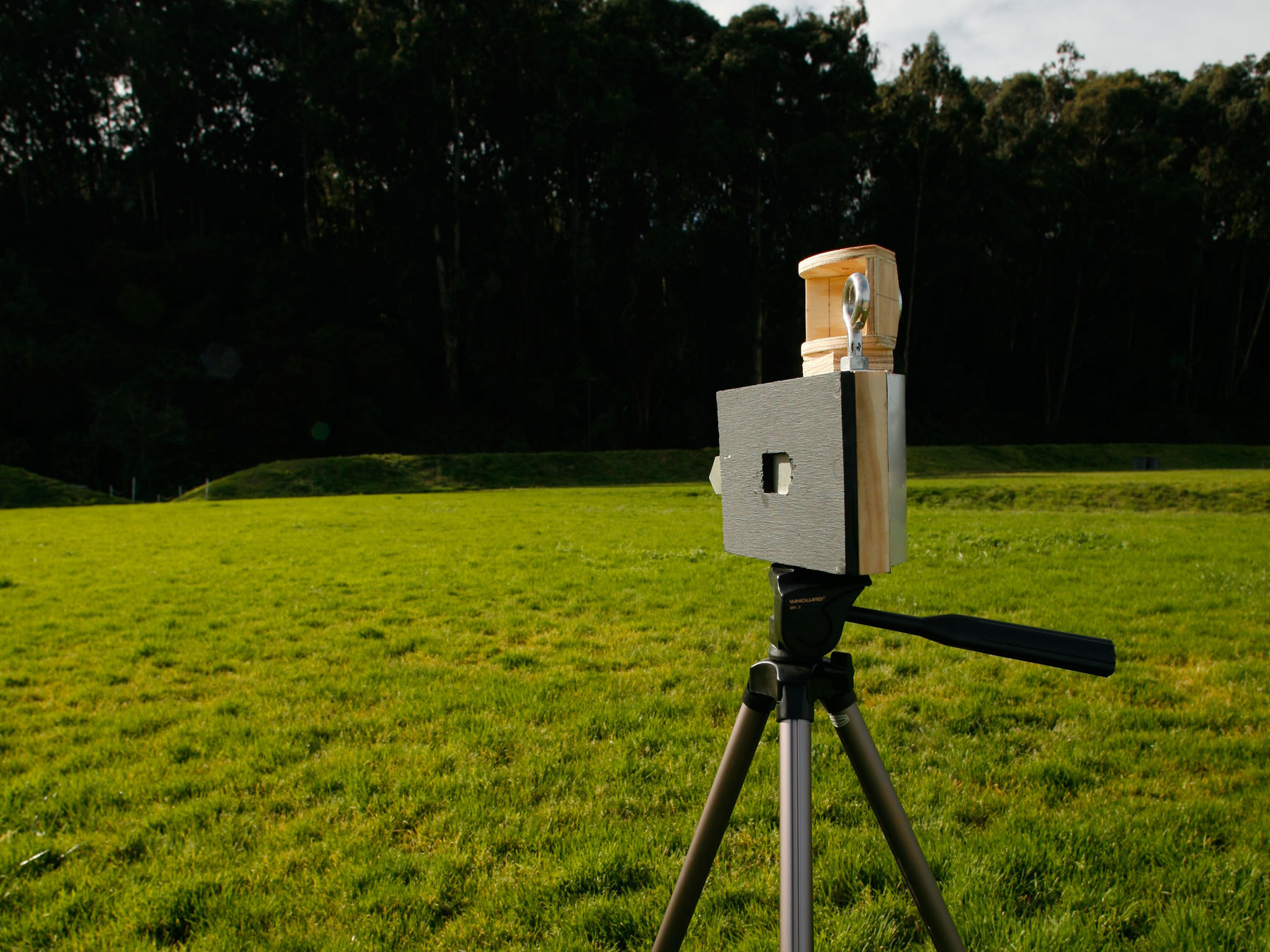Conclusion
Join the Pinhole Paparazzi
120mm Film
Once you remove 120mm film from its foil pouch, the only thing that keeps ambient light from exposing it is the backing paper at each end of the roll, and the fact that it’s wrapped so tightly around the spool. So be careful, and don’t reload in the sun.
Choose 100- or 200-speed negative film. Anything faster makes sunny-day exposures too brief to time accurately. I recommend Fuji’s Superia color and Acros black-and-white films.
Loading the Camera
When the roll is done, you don’t rewind; instead, wind it all onto the take-up spool. The original inner spool becomes the take-up for your next roll.
- Unscrew the front of the camera, unspool a few inches of backing paper, and use your (moistened) fingertips to fish the paper through the film gate.
- Tape the paper onto the take-up spool, wind it one turn, and then close up the camera.
- Wind until the “1” shows in the peep sight. You’re on a roll, and ready to shoot! (After each winding, stick the black tape back down over the hole.)
Taking Photos
With the viewfinder, you will need to move your eye around to see all the edges of the frame.
After every shot, wind to the next odd number, so you don’t accidentally double-expose. This yields 6 double-width panoramas per roll.
With 100-speed film, try 2-second exposures in sun, or 10 seconds in bright shade. At this slow shutter speed and camera height, you’ll need a tripod to keep your images sharp. In a pinch, resting the camera on a flat surface will work, too, but be careful not to jiggle the camera while exposing the film. For other light conditions, use a light meter or another camera to get exposure times. Your Pin-o-rama has an f-stop of about f/200. Few light meters give readings for f-stops this high, but you can take the shutter speed indicated for f/16 and multiply the time by 150. Don’t hesitate to double or triple the calculated time. Negative films are tolerant of overexposure. To time exposures without looking away from the subject, hold a watch to your ear and count ticks.
Finishing a Roll
After exposing shot #11 (the sixth and final shot), keep winding until the paper backing disappears from the peep sight. Open the camera in dim light, and use the adhesive band to tape the roll tight. (If you find the take-up reel has wound too loosely, add more spring pressure on the supply spool.)
Any lab or camera shop that caters to professionals can develop your 120mm negatives for about $5. The 6×12 format is nonstandard, so they should develop the negatives only, and return them uncut. Then you can scan them yourself with a flatbed film scanner. The generous negative size means that even a budget scanner will do a decent job — resolution is a non-issue given the softness of pinhole images. (Darkroom prints are possible too, using a 4×5 format enlarger.)
Links and Resources
General pinhole info: mrpinhole.com, f295.com
Homemade Pinhole Flickr Group: http://flickr.com/groups/homemadepinhole
"World Pinhole Day" (April 29th, 2007) – finish your Pin-o-rama camera and join the fun! pinholeday.org
Recommended 120 film source: bhphotovideo.com
This project first appeared in MAKE Volume 09, page 92.


